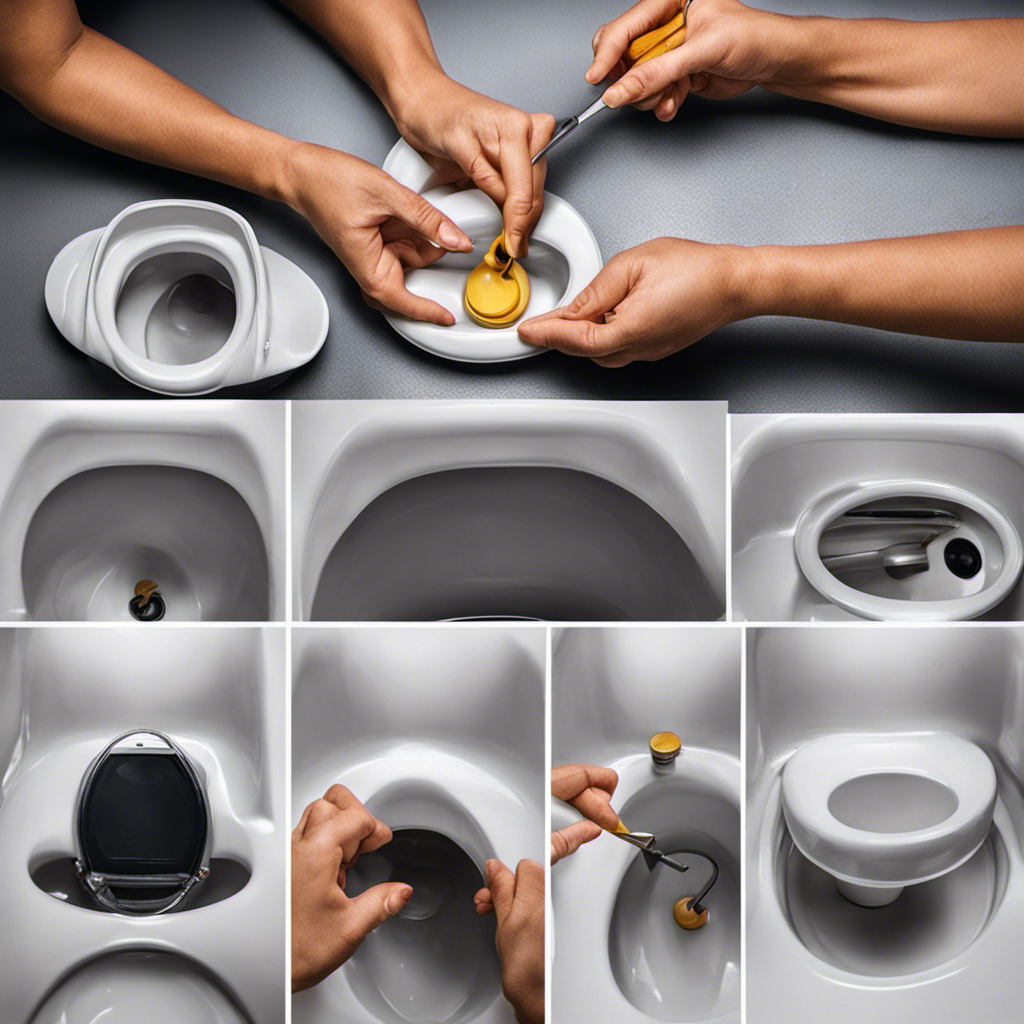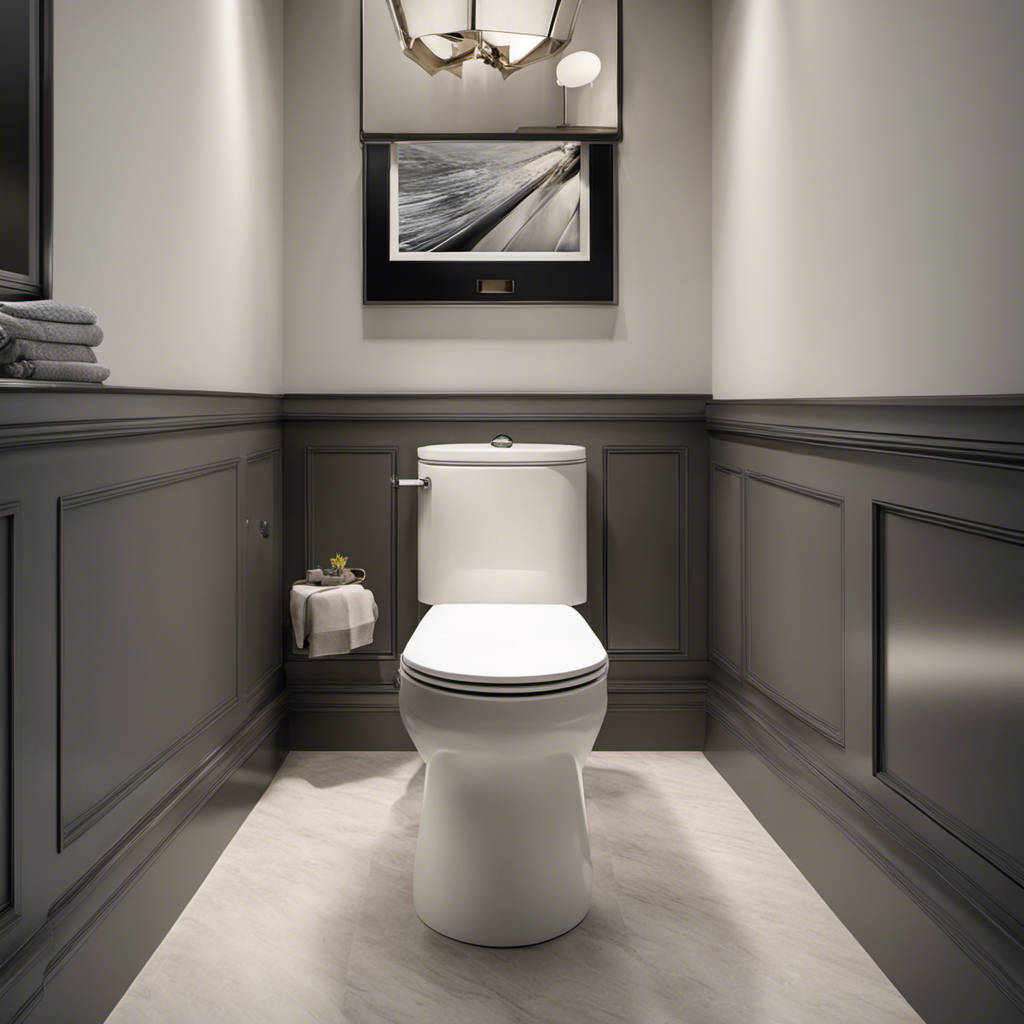Welcome, fellow plumbing enthusiasts, to our discussion on the amazing flush valve.
With its unassuming presence and understated functionality, the flush valve silently orchestrates the symphony of water flow within our commodes.
As we delve into the inner workings of this unsung hero, we shall uncover the secrets behind its flawless operation, explore its various incarnations, troubleshoot common maladies, and impart maintenance wisdom to ensure its perpetual efficiency.
Prepare to be enlightened, dear readers, for the flush valve holds the key to lavatory perfection.
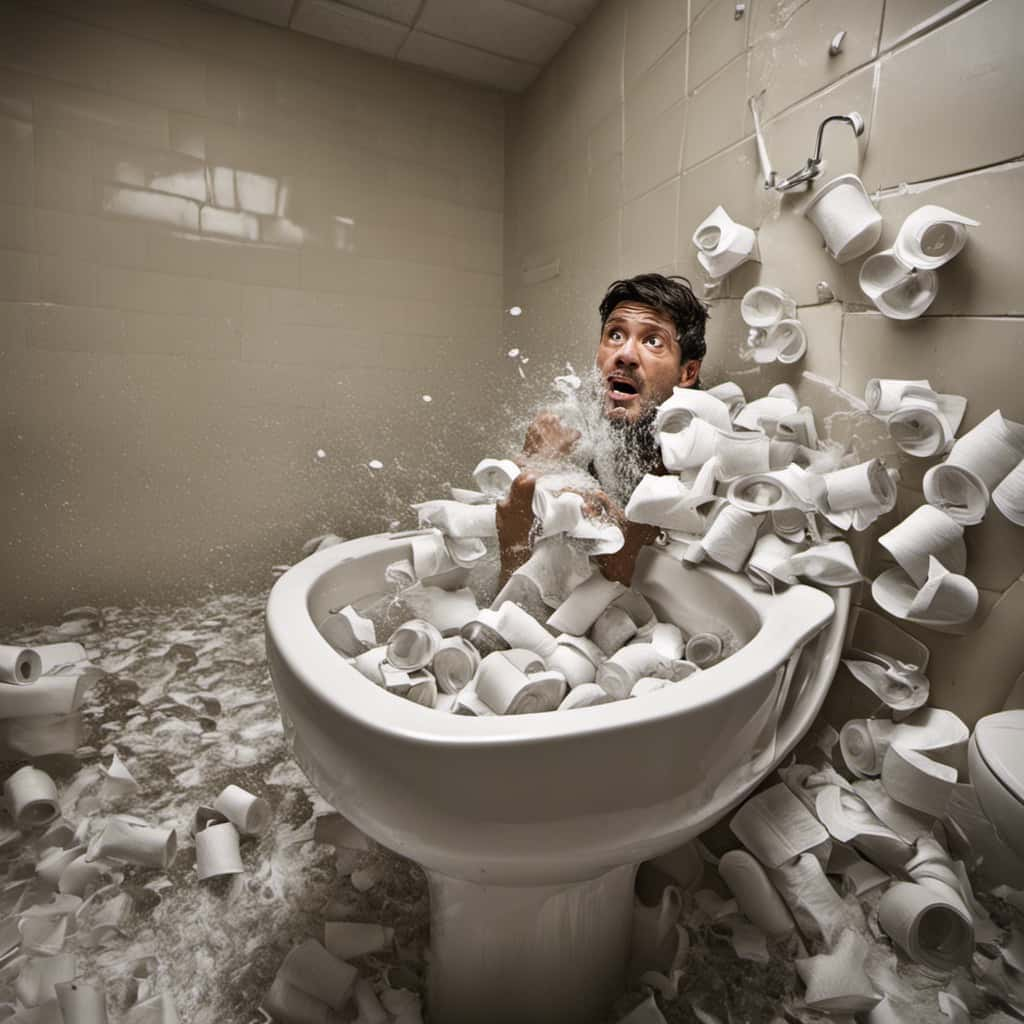
Key Takeaways
- Flush valves efficiently remove waste from the toilet bowl and contribute to proper sanitation and hygiene.
- Dual flush valves offer water conservation by saving water for liquid waste and providing a powerful flush for solid waste.
- Regular maintenance of flush valves prevents debris and mineral buildup, helps identify and address potential issues, and saves time and money on costly repairs.
- Troubleshooting common issues with flush valves, such as weak flushing or continuous running, is an important aspect of maintenance and can often be resolved through inspection and adjustment.
Importance of Flush Valve
The importance of a flush valve lies in its ability to efficiently and effectively remove waste from a toilet bowl. Flush valves play a crucial role in maintaining proper sanitation and hygiene in our bathrooms. But their significance goes beyond just cleanliness.
Flush valves also contribute to water conservation, an increasingly important concern in today’s world. By regulating the amount of water used during each flush, flush valves help optimize water usage and reduce unnecessary wastage. This is particularly evident in dual flush toilets, which offer two flushing options – one for liquid waste and another for solid waste.
The benefits of dual flush toilets are twofold: they not only save water by using less for liquid waste, but also ensure a powerful flush when needed for solid waste. Understanding the importance of flush valves sets the stage for exploring how they actually work.
How Flush Valves Work
Often, we rely on flush valves to efficiently remove waste from a toilet bowl and maintain proper sanitation and hygiene in our bathrooms. The flush valve mechanism is a crucial component that enables this process to happen smoothly.
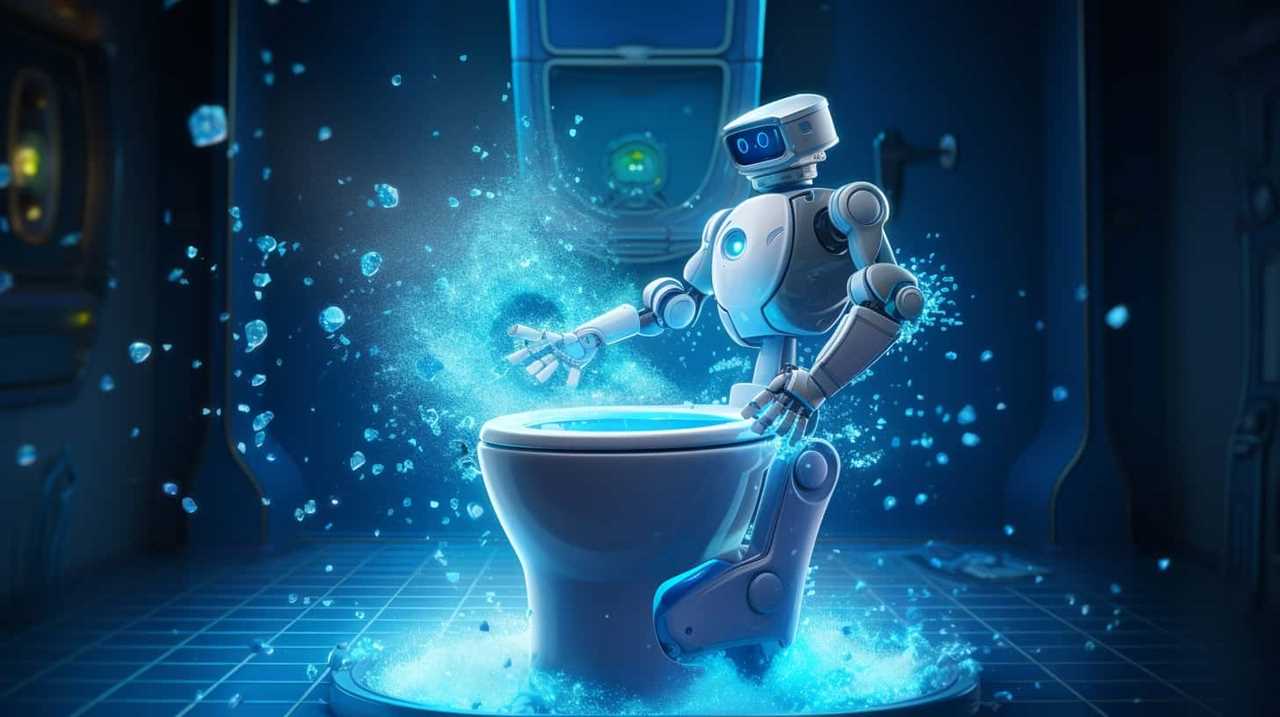
A flush valve typically consists of a valve seat, a valve disc, and a flush lever. When the flush lever is pressed, it lifts the valve disc off the valve seat, allowing water to flow from the tank into the toilet bowl. As the water enters the bowl, it creates a siphon effect that carries away the waste.
The advantages of flush valves include their ability to provide a powerful and thorough flush, preventing clogs and ensuring effective waste removal. They also offer water-saving benefits by allowing for adjustable water volume and controlling the duration of the flush. Additionally, flush valves are durable and require minimal maintenance, making them a reliable choice for commercial and residential applications alike.
Different Types of Flush Valves
After discussing how flush valves work, let’s now delve into the different types of flush valves available in the market. When it comes to flush valve installation, there are two main types to consider: exposed and concealed flush valves.
Exposed flush valves are visible and mounted on the outside of the toilet bowl or urinal, making them easier to access for maintenance and repairs. On the other hand, concealed flush valves are hidden behind the wall or within the toilet fixture, providing a sleek and streamlined appearance.
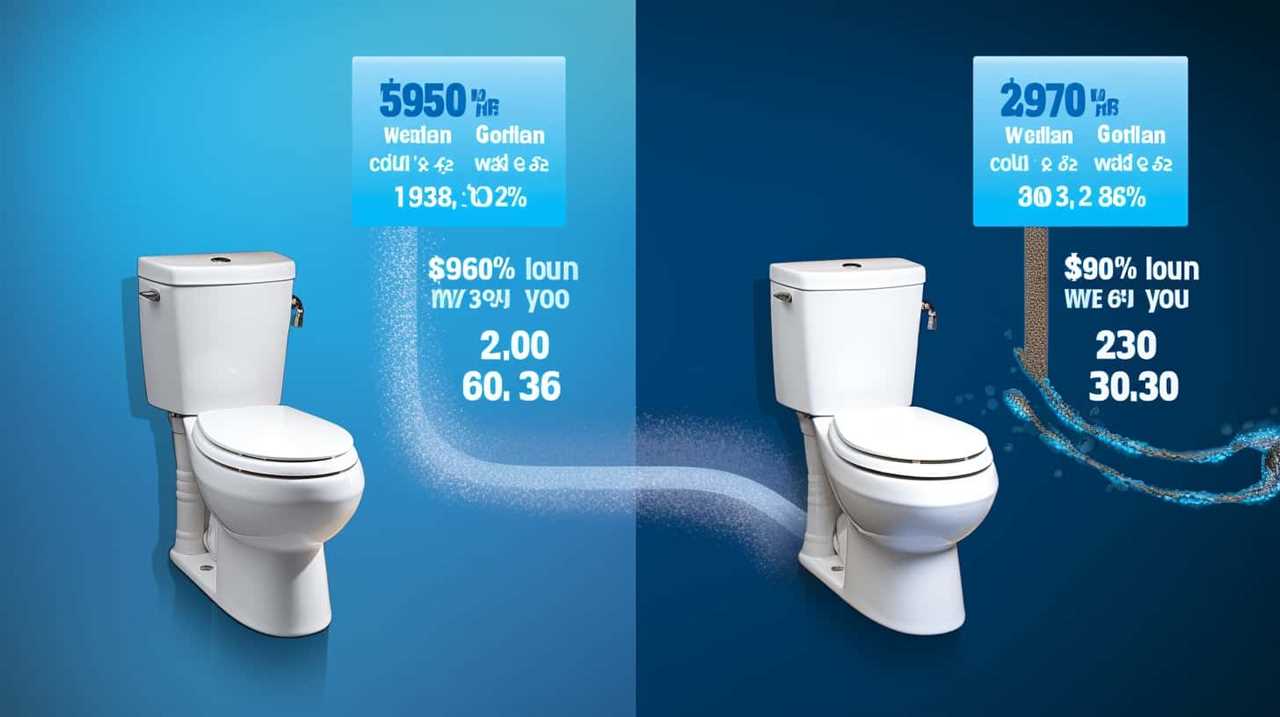
One popular type of flush valve is the dual flush valve, which offers the benefits of water conservation and efficiency. Dual flush valves allow users to choose between a full flush for solid waste and a partial flush for liquid waste, reducing water usage and saving money on utility bills. This innovative design has gained popularity due to its environmental sustainability and cost-effectiveness.
Common Problems With Flush Valves
As we explore common problems with flush valves, we encounter various issues that can affect their performance and functionality. Here are four common problems you may encounter with flush valves:
- Inadequate flushing: If your flush valve isn’t providing enough water to clear the bowl properly, it may be due to a clog or a faulty flush valve mechanism. Troubleshooting flush valves involves checking for any obstructions in the water flow and ensuring that the flush valve is opening and closing properly.
- Continuous running: If your flush valve keeps running even after the tank is full, it could be a sign of a worn-out flapper or a faulty fill valve. DIY flush valve repairs in this case may involve replacing the flapper or adjusting the fill valve to stop the continuous running.
- Weak flush: A weak flush can be caused by a partially clogged flush valve or a low water level in the tank. Troubleshooting flush valves in this case requires cleaning the valve and adjusting the water level to ensure a strong and effective flush.
- Leaking water: If you notice water leaking from the base of the flush valve or from the tank, it could be due to a worn-out gasket or a loose connection. DIY flush valve repairs for leaks involve replacing the gasket or tightening the connections to prevent water leakage.
Maintenance Tips for Flush Valves
To ensure optimal performance and longevity, regular maintenance is essential for flush valves. Implementing a maintenance routine offers several benefits.
First and foremost, it helps prevent clogs and reduces the likelihood of valve malfunctions. By regularly inspecting and cleaning the valve, you can remove any debris or mineral buildup that may hinder its proper functioning.
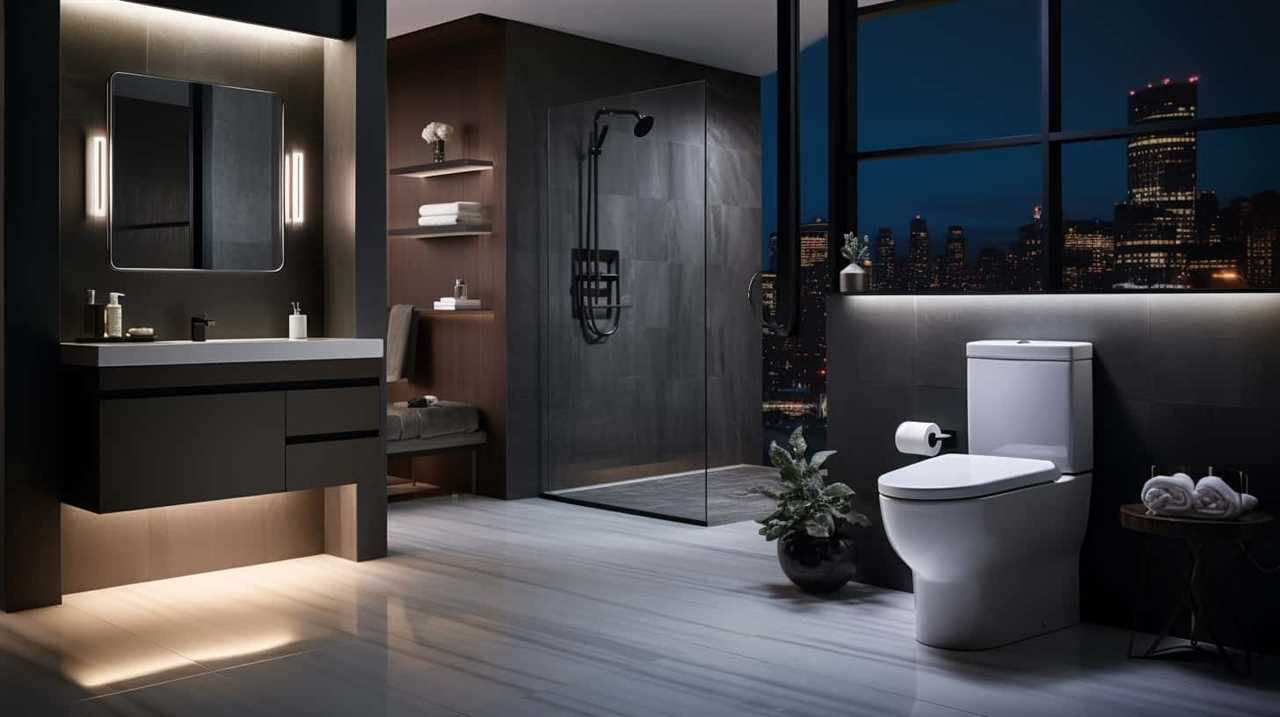
Additionally, maintenance allows you to identify and address any potential issues before they escalate, saving you time and money on costly repairs. Troubleshooting common issues is another crucial aspect of maintenance.
If you encounter problems such as weak flushing or continuous running, check the valve’s components, including the flapper, overflow tube, and water supply. A thorough inspection and adjustment can often resolve these issues and restore the valve to its optimal functionality.
Frequently Asked Questions
Can a Flush Valve Be Installed in Any Type of Toilet?
Yes, a flush valve can be installed in any type of toilet. However, it is important to consider the benefits of using a flush valve system and the pros and cons of different types of flush valves.
How Often Should a Flush Valve Be Replaced?
We should replace a flush valve periodically to ensure proper toilet functionality. Signs of a worn-out flush valve include leakage, weak flushing, and constant running water. Regular flush valve maintenance is crucial.
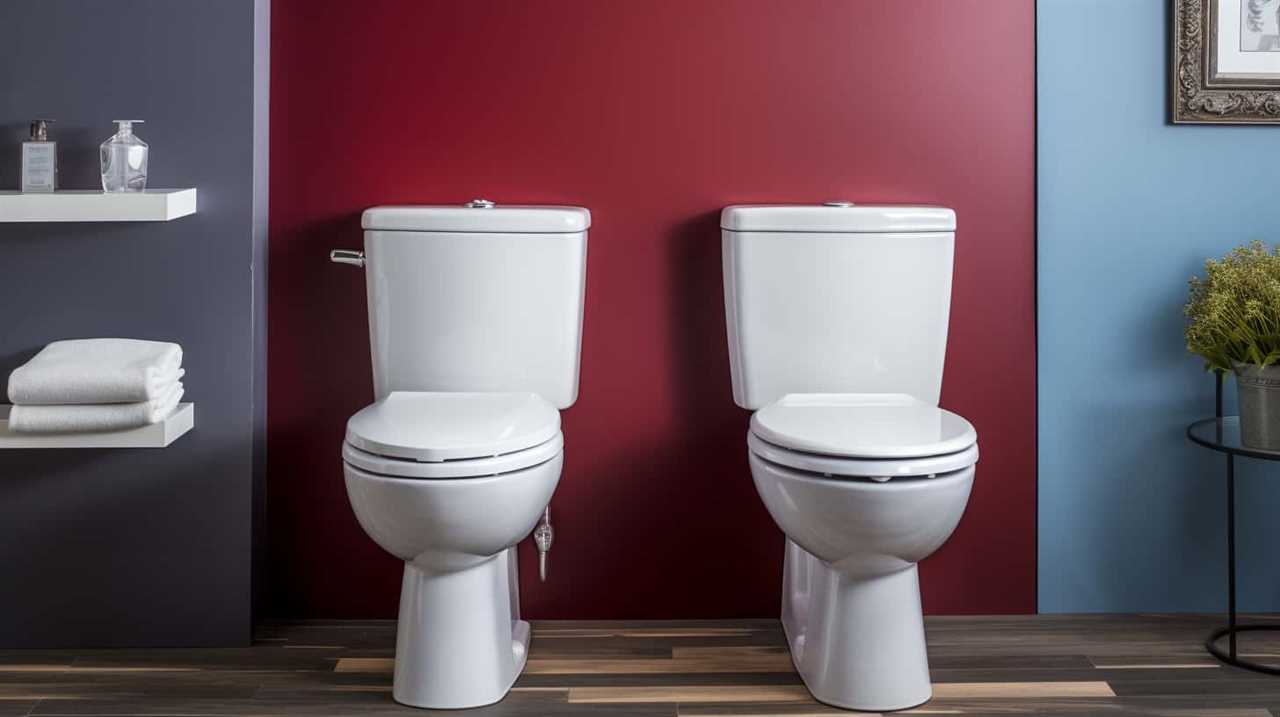
Are There Any Eco-Friendly Flush Valve Options Available?
Yes, there are eco-friendly flush valve options available. These utilize water-saving technology and are made from eco-friendly materials. They are designed to reduce water consumption and promote sustainability in plumbing systems.
Can a Flush Valve Be Repaired, or Does It Need to Be Fully Replaced?
When it comes to repairing flush valves, it’s important to assess the extent of the problem. In some cases, a simple repair can fix common issues like leaks or clogs. However, more severe damage may require a full replacement.
Are There Any Benefits to Using a Dual Flush Valve System?
Using a dual flush valve system has several benefits. It enhances efficiency by allowing users to choose between a full and partial flush, conserving water. This can lead to significant water savings over time.
Conclusion
In conclusion, the flush valve serves as the unsung hero of our daily lives, silently and efficiently ensuring the proper functioning of our toilets.
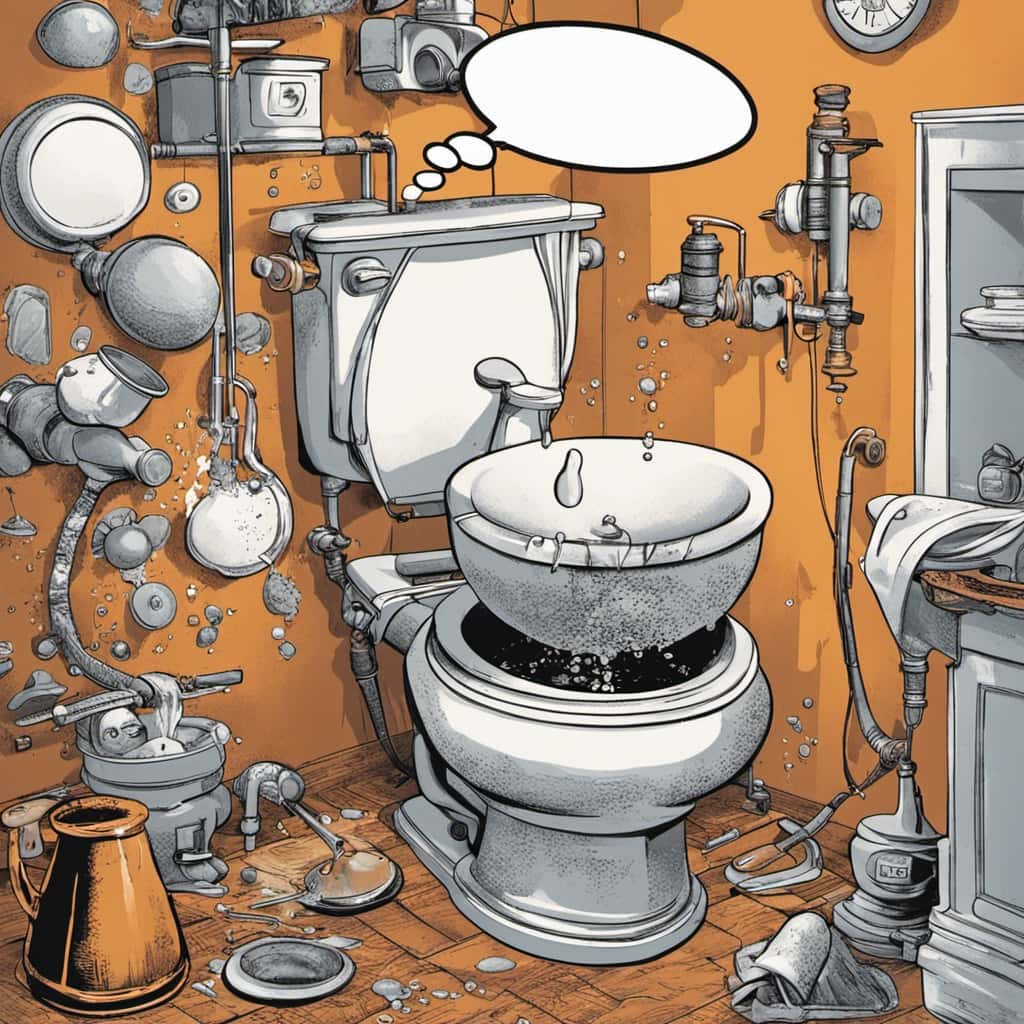
Like a conductor leading an orchestra, it orchestrates the flow of water, symbolizing the harmony and balance within our plumbing systems.
Its intricate mechanisms, from the float to the diaphragm, work in perfect synchronization, guaranteeing a clean and hygienic flush every time.
With regular maintenance and care, this small yet vital device will continue to uphold the standards of cleanliness in our modern world.



